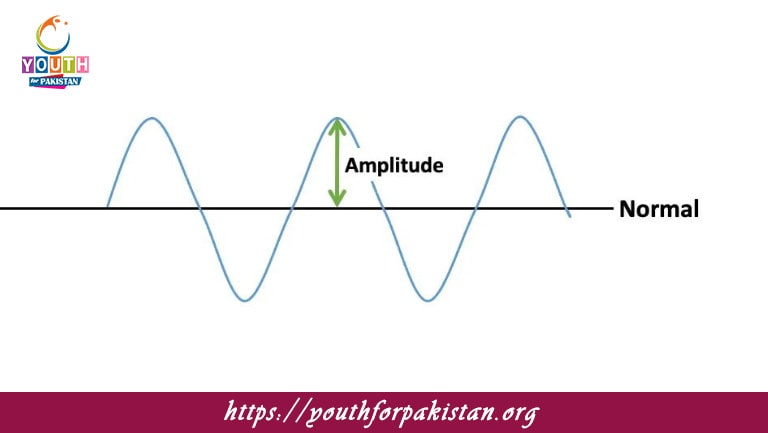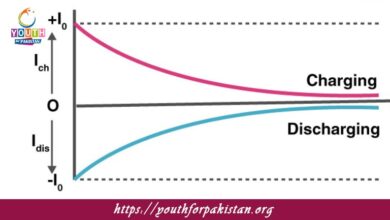Amplitude MDCAT MCQs with Answers

Welcome to the Amplitude MDCAT MCQs with Answers. In this post, we have shared Amplitude Multiple Choice Questions and Answers for PMC MDCAT 2024. Each question in MDCAT Physics offers a chance to enhance your knowledge regarding Amplitude MCQs in this MDCAT Online Test.
Amplitude MDCAT MCQs Test Preparations
What is the amplitude of a wave?
A) The distance between two consecutive crests
B) The maximum displacement of a point from its equilibrium position
C) The distance between two consecutive troughs
D) The total distance traveled by the wave
Which of the following best describes the amplitude of a sound wave?
A) The distance between the source and the listener
B) The height of the sound wave’s crest from the equilibrium position
C) The speed of sound in a medium
D) The frequency of the sound wave
If the amplitude of a wave is increased, what happens to the wave’s energy?
A) It decreases
B) It remains the same
C) It increases exponentially
D) It becomes zero
The amplitude of a wave is:
A) Directly proportional to its frequency
B) Inversely proportional to its frequency
C) Directly proportional to the square of the frequency
D) Inversely proportional to the square of the frequency
Which of the following is true about the amplitude of a wave?
A) It determines the frequency of the wave
B) It is the height of the wave crest from the equilibrium position
C) It affects the speed of the wave
D) It is the distance between two consecutive crests
If the amplitude of a sound wave is halved, what happens to the intensity of the sound?
A) It doubles
B) It is halved
C) It remains the same
D) It is quartered
The amplitude of a wave affects which of the following characteristics?
A) Wavelength
B) Frequency
C) Speed
D) Loudness or brightness
The amplitude of a wave is measured in:
A) Hertz
B) Meters
C) Watts
D) Joules
In a transverse wave, the amplitude is:
A) The distance from the equilibrium position to the crest or trough
B) The distance between two consecutive crests
C) The distance traveled by the wave in one cycle
D) The distance between two consecutive troughs
Which of the following statements is correct regarding amplitude?
A) The amplitude of a wave determines its speed
B) The amplitude is the same for all waves of the same type
C) The amplitude is the maximum displacement from the equilibrium position
D) The amplitude affects the wave’s frequency but not its energy
The amplitude of a wave is related to its:
A) Speed
B) Frequency
C) Energy
D) Wavelength
If the amplitude of a wave is doubled, the energy of the wave is:
A) Doubled
B) Halved
C) Quadrupled
D) Remains the same
The amplitude of a wave does NOT affect which of the following?
A) Loudness of sound
B) Brightness of light
C) Frequency of the wave
D) Energy of the wave
The amplitude of a wave is:
A) Directly proportional to its speed
B) Inversely proportional to its wavelength
C) Directly proportional to its energy
D) Inversely proportional to its energy
Which wave property is affected by amplitude?
A) Speed
B) Wavelength
C) Frequency
D) Intensity
The amplitude of a wave is 4 cm. What is the maximum displacement of a point on the wave from its equilibrium position?
A) 4 cm
B) 8 cm
C) 2 cm
D) 1 cm
The amplitude of a wave can be affected by:
A) The medium through which the wave travels
B) The frequency of the wave
C) The wavelength of the wave
D) The speed of the wave
In a longitudinal wave, the amplitude is measured as the distance between:
A) Compressions
B) Rarefactions
C) The equilibrium position and the point of maximum compression or rarefaction
D) Troughs
The amplitude of a wave is related to:
A) Its frequency
B) Its speed
C) Its wavelength
D) Its energy
If a wave’s amplitude is increased, its frequency will:
A) Increase
B) Decrease
C) Remain the same
D) Become zero
The amplitude of a wave determines:
A) The wave’s frequency
B) The wave’s speed
C) The wave’s energy
D) The wave’s wavelength
The amplitude of a wave can be defined as the distance from:
A) Trough to trough
B) Crest to crest
C) Equilibrium to crest or trough
D) Compression to rarefaction
Which of the following statements about amplitude is false?
A) Amplitude is a measure of the wave’s maximum displacement
B) Amplitude affects the loudness of sound waves
C) Amplitude affects the speed of the wave
D) Amplitude affects the brightness of light waves
If the amplitude of a wave is decreased, the energy of the wave will:
A) Decrease exponentially
B) Increase exponentially
C) Remain the same
D) Increase linearly
What happens to the amplitude of a wave when it travels through a medium with higher density?
A) It increases
B) It decreases
C) It remains the same
D) It doubles
The amplitude of a wave is measured from:
A) Trough to trough
B) Crest to crest
C) Equilibrium position to crest or trough
D) Compression to rarefaction
Which of the following is true about amplitude in a standing wave?
A) It varies along the length of the wave
B) It is constant along the length of the wave
C) It is zero at the nodes
D) It is maximum at the nodes
If two waves with the same amplitude interfere constructively, the resultant amplitude will be:
A) Equal to one of the original amplitudes
B) The sum of the two amplitudes
C) The difference between the two amplitudes
D) Zero
The amplitude of a wave can be observed as:
A) The maximum height of the wave crest
B) The distance between two consecutive troughs
C) The average distance between two crests
D) The distance between two consecutive compressions
The amplitude of a wave in a string depends on:
A) The tension in the string
B) The wavelength of the wave
C) The frequency of the wave
D) The speed of the wave
Which wave characteristic does NOT affect amplitude?
A) Medium
B) Frequency
C) Speed
D) Energy
The amplitude of a wave is an indicator of its:
A) Speed
B) Wavelength
C) Frequency
D) Intensity
If a wave’s amplitude is increased by a factor of 3, the energy of the wave is increased by a factor of:
A) 3
B) 6
C) 9
D) 12
The amplitude of a wave is zero at:
A) The crest
B) The trough
C) The equilibrium position
D) The antinode
In a wave, the amplitude is a measure of:
A) The average displacement of the wave
B) The energy of the wave
C) The distance between two consecutive nodes
D) The speed of the wave
The amplitude of a wave is unaffected by changes in:
A) Frequency
B) Medium
C) Wavelength
D) Speed
The maximum displacement of a particle from its equilibrium position is called:
A) Frequency
B) Wavelength
C) Amplitude
D) Speed
Which of the following statements is true about amplitude and intensity?
A) Higher amplitude means higher intensity
B) Lower amplitude means higher intensity
C) Amplitude and intensity are not related
D) Amplitude is inversely proportional to intensity
The amplitude of a wave affects its:
A) Wavelength
B) Speed
C) Frequency
D) Loudness
In a wave on a string, increasing the amplitude will:
A) Increase the frequency
B) Decrease the speed
C) Increase the energy
D) Increase the wavelength
The amplitude of a wave is the distance between:
A) Two consecutive crests
B) Two consecutive troughs
C) The equilibrium position and the crest
D) The crest and the trough
The amplitude of a wave can be measured from:
A) Crest to crest
B) Trough to trough
C) Equilibrium to crest or trough
D) Compression to rarefaction
If you are interested to enhance your knowledge regarding Physics, Chemistry, Computer, and Biology please click on the link of each category, you will be redirected to dedicated website for each category.





